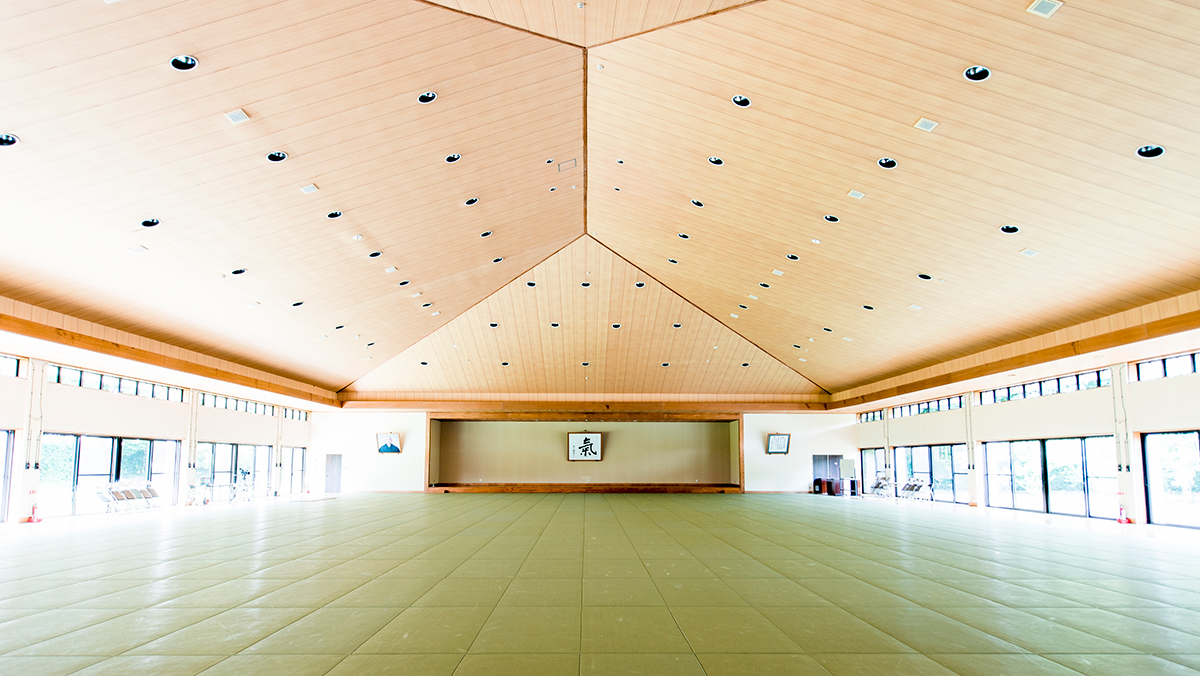I attend the Shinshin Toitsu Aikido black belt promotion tests, which are conducted throughout Japan, as an observer.
This is done in addition to the existing testing held in Tochigi (three times a year), Osaka (twice a year), Sendai, and Fukuoka. Also, the promotion tests will be held in Nagano, Nagoya, and Hiroshima, and other cities beginning this year.
People who take black belt promotion tests seem to become quite nervous, and some of them even experience their mind going completely blank. I am often asked the question,
“how can I prevent my mind going completely blank?”
People seem to sincerely and honestly want to know the answer.
Even when we calm ourselves at the One Point in the lower abdomen, our mind can go completely blank. The more we consciously try not to let that happen, the worse our condition becomes.
The way to handle this, however, is quite simple: we “put what we have learned (acquisition) in our body” over and over again so that we can move freely even when our mind goes blank.
If we move while being too much in our head, too consciously, or intentionally, we cannot move at all and our mind goes blank.
But when we have put the know-how into our mind and body, we can move without thinking. In other words, it is important to “knead” [what we have acquired] into our body until we do not have to rely on our head.
Here is a rule of thumb. Let’s say, when we experience something once, we call it “1”.
Experiencing something can not even compare to having seen or heard it, and experiencing something just once makes a huge difference. However, we call experiencing something once “1” here.
If you repeat it “10” (times), which is one digit more, we get to know how it feels, and how you are supposed to feel it in your body. There is a sense of excitement in acquiring something, and this is what makes our training so appealing.
However, the feeling we gain will disappear after a night’s sleep. This means even if we were able to acquire it, we have not reached the level of mastering it.
It takes another “100” (times), which is one whole digit more, for what we have acquired to be firmly established in our body. Once we repeated that many times, we can probably say we have mastered it.
In general, many people assume that they have “made it” at the stage of acquisition, and this may be the reason some people have difficulty making progress.
And to be able to do what we have mastered at any time and in any environment, we need to repeat something “1000” (more times), which is another whole digit more. I always use this as a minimum standard for building on our efforts.
This means we need to “knead” one additional digit of time at each stage: experiencing →acquiring → mastering → being able to do it, which is a point where the training literally becomes a part of you.
As long as we put what we learn into our body and mind, we will never be betrayed by what we have learned. When we have to deal with something important, if we put something only in our head, we can be easily betrayed by it.
I often talk about these important things with young instructors and leaders at every opportunity I have.
I have two young instructors who are training under me. One of them was quick to understand and seemed to be able to acquire what was taught in a short period of time. The other one, however, is slow to understand and had a hard time acquiring it. Over the course of two months, I worked with him until he acquired a solid experience of what it feels like.
Each of them seemed to be moved deeply by moment they were able to acquire it.
Some time later, I was able to check on them when I had an opportunity to see them both at the same time. Unfortunately, the instructor who had understood quicker reverted back to his original state and had not mastered what he was taught, while the other who had understood slowly was steadily mastering it.
When I heard their stories, it turned out that the instructor who was quicker to understand thought he mastered it, so he did not create enough opportunities for “kneading” it afterwards.
The other instructor who was slower to understand took a long time to acquire it, so he repeated what he was taught every day from the day he received the instructions, so that he would not lose the feeling he had acquired.
They say what is easily gained is easily lost, and that is exactly what had happened to them. As attested by some old sayings, luck, steadfastness, and perseverance are very important.
Having an overwhelming gap in ability between them, the instructor who was quick to understand changed his basic attitude toward “acquiring” the skills. He seemed to have realized the most important thing, and I am very much looking forward to his future growth.
We can master something by first acquiring it. Acquiring is the start of learning, not the goal.
Let’s strive to master our arts.
Translated by Mayumi Case
Edited by David Shaner and Matthew Attarian
Eastern Ki Federation
https://easternkifederation.org/
Original article in Japanese: 会得と体得 (Etoku to Taitoku)
November 1, 2022
http://www.shinichitohei.com/japanese/2022/11/post-2aa0a2.html

